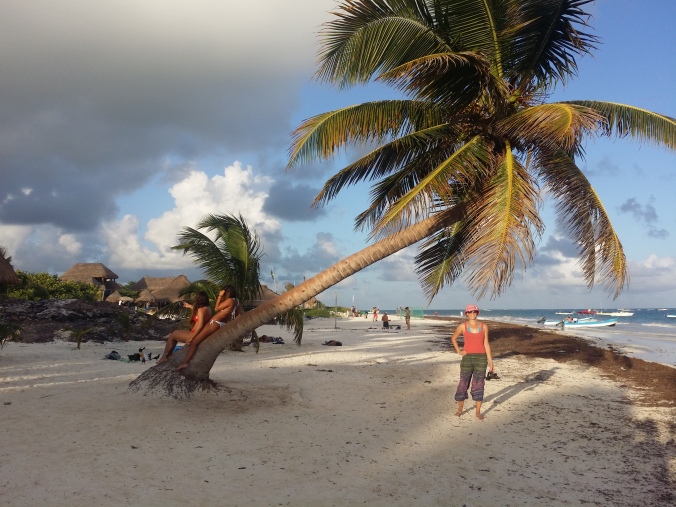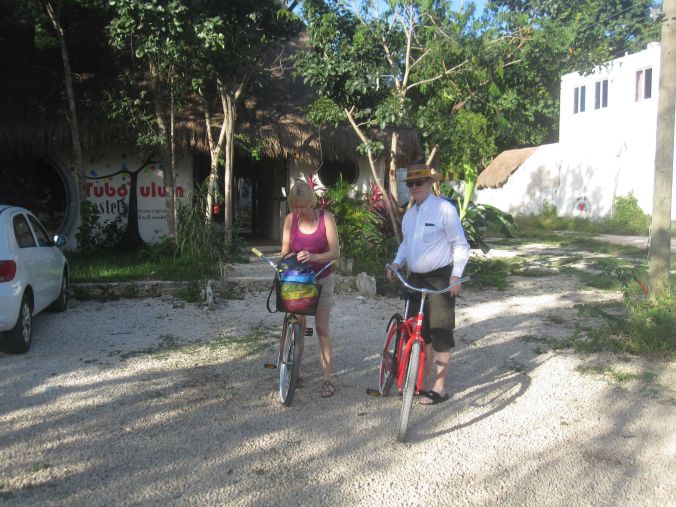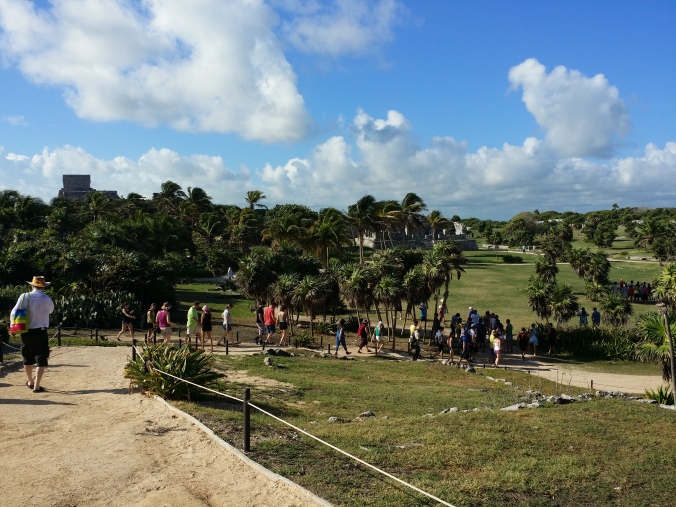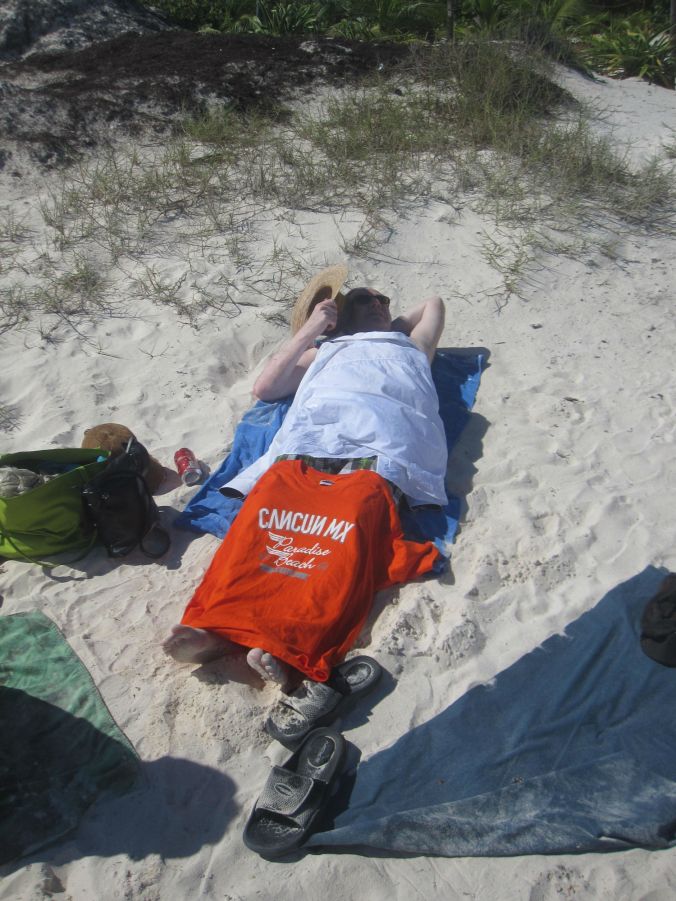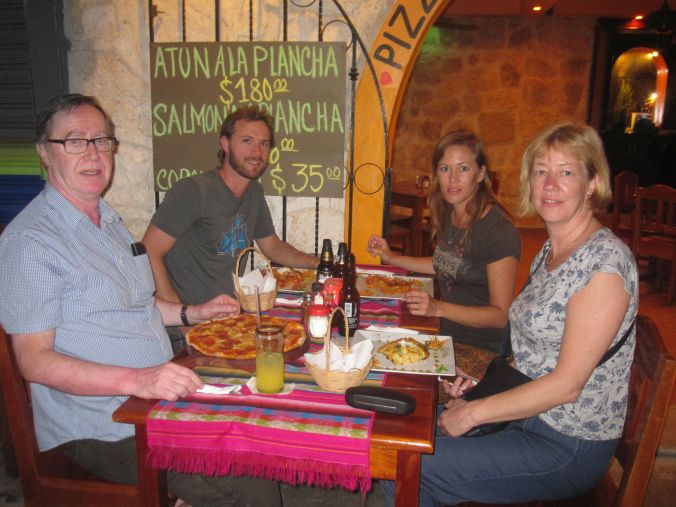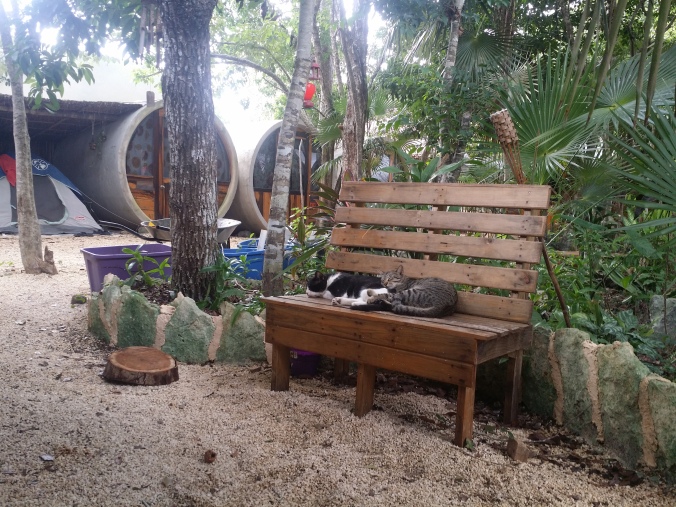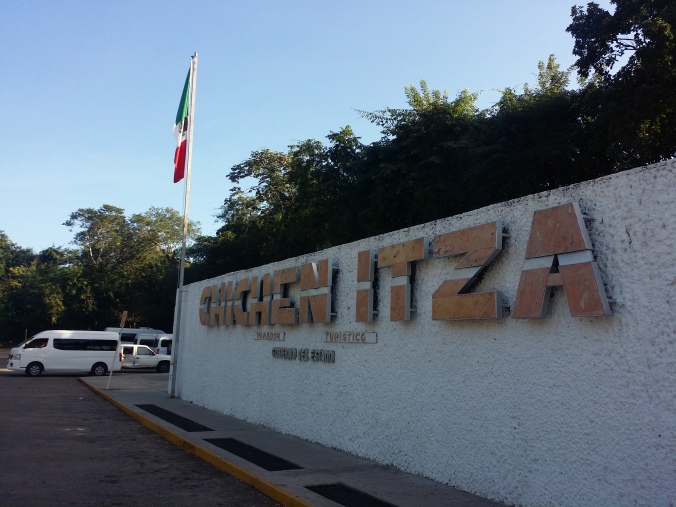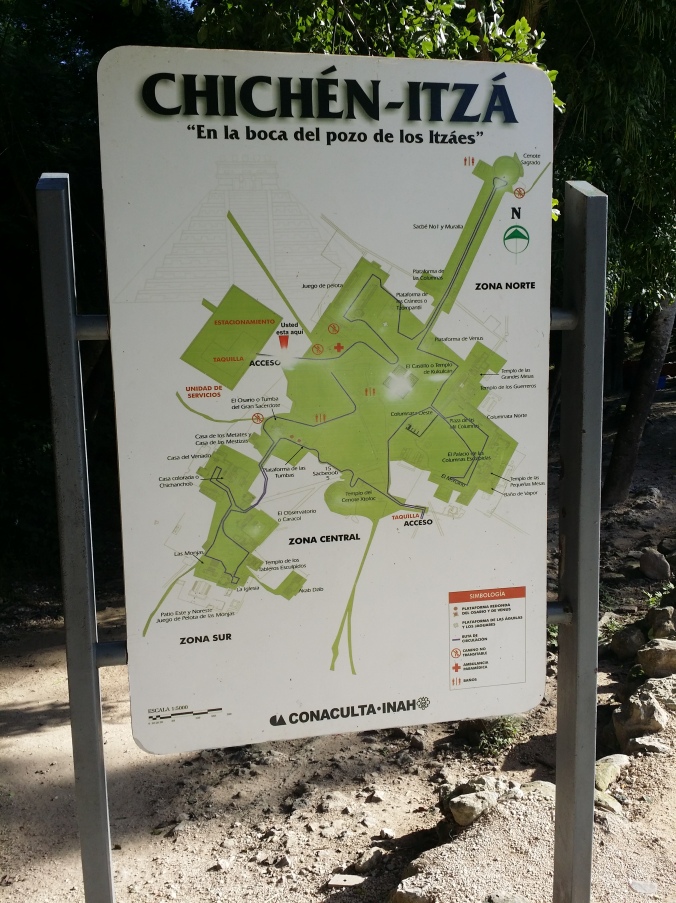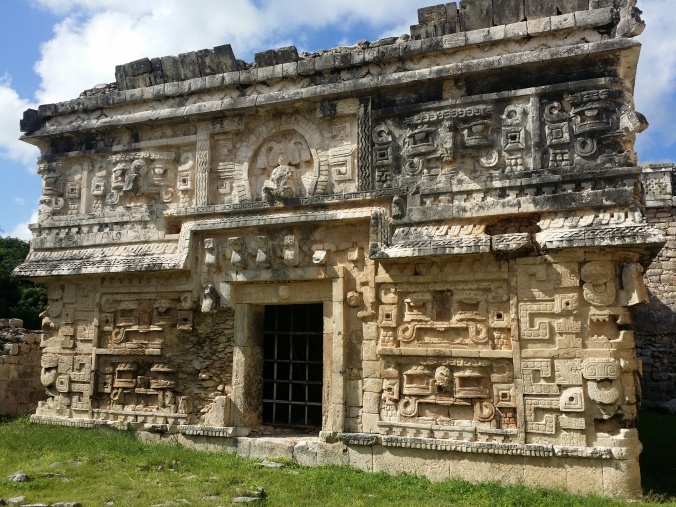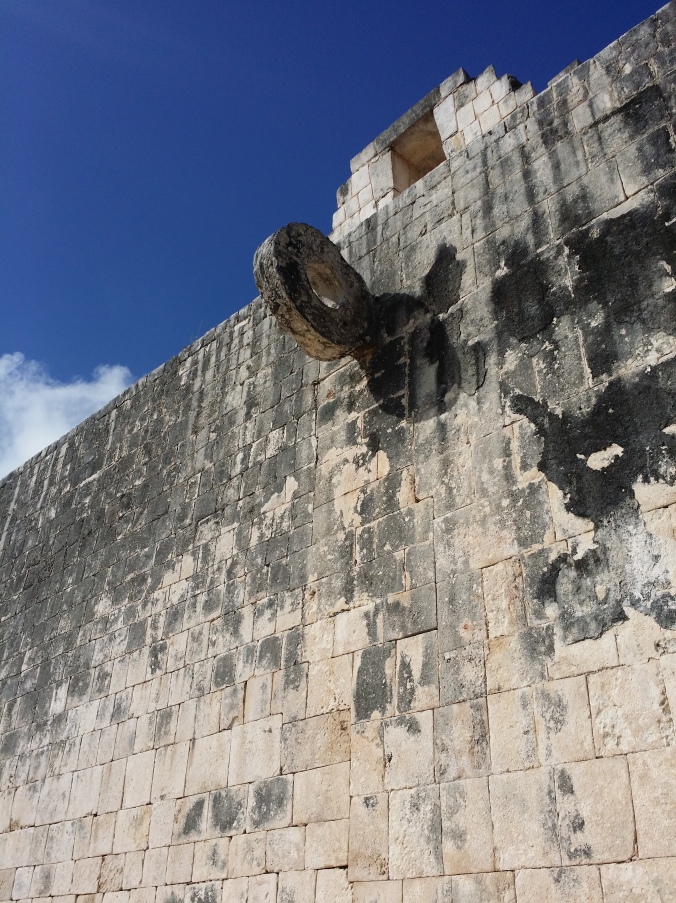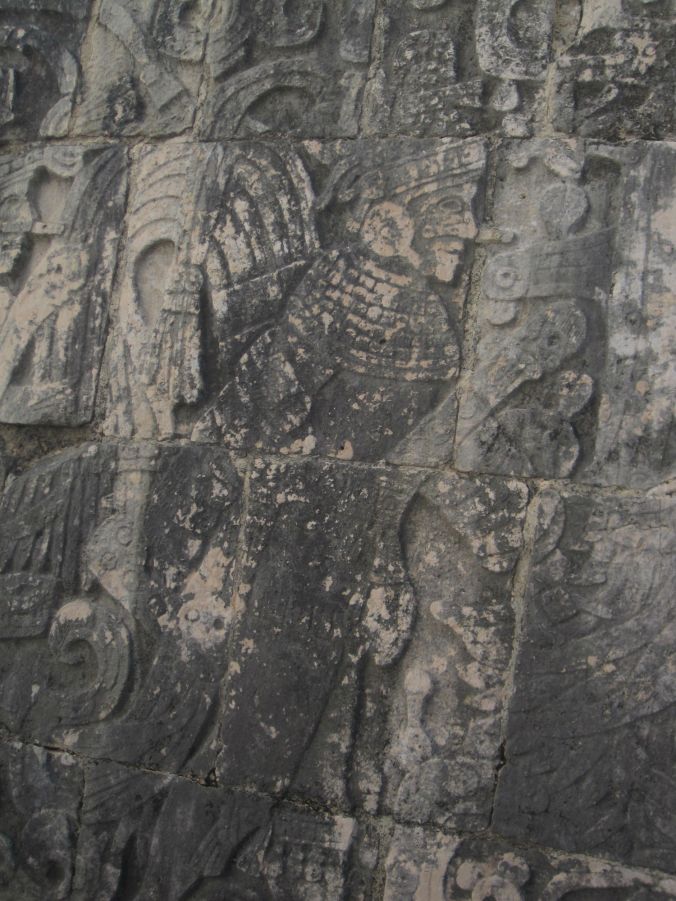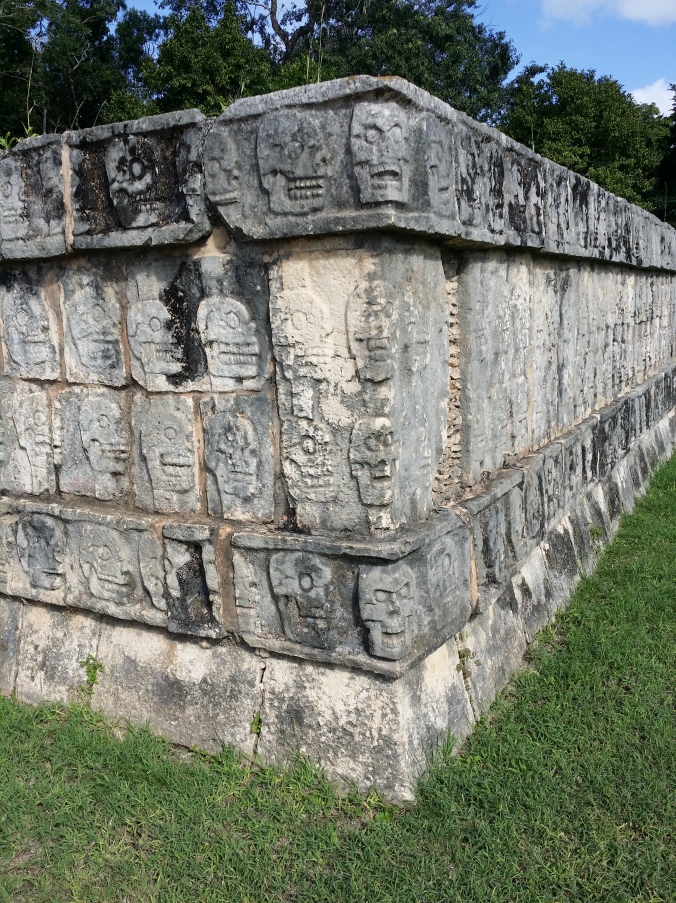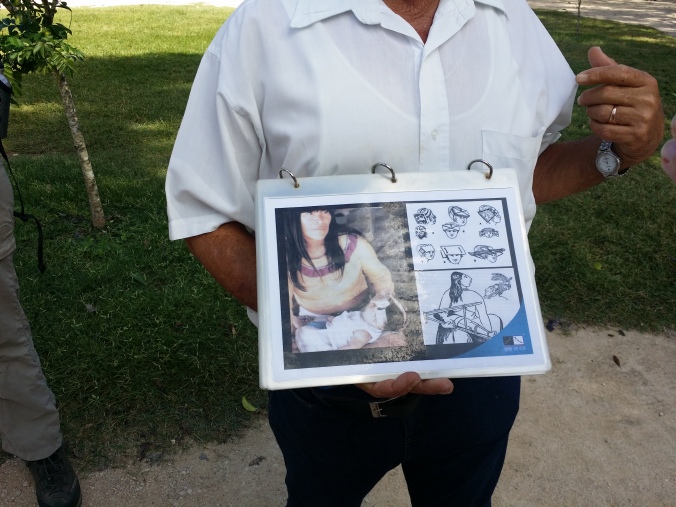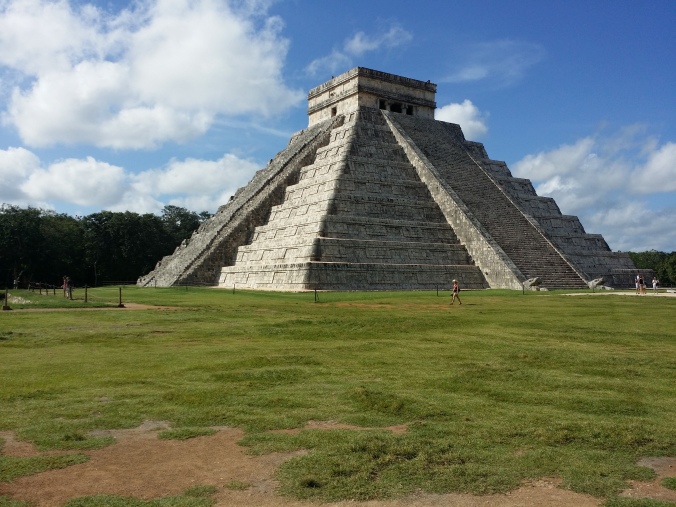(Please scroll down to the orange text for the English version)
Vi åkte med Maja och Mats till nästa Mayaruin som ligger vid Tulum på östkusten. Mayastaden hette Zama, som betyder gryningsstaden, och staden är speciell på flera sätt. Zama var en av de sista städerna som Mayaindianerna byggde, därför är den mest välbevarad också, och den är tydligen den enda Mayastaden som ligger vid kusten. Zama är strategiskt placerad vid en naturlig öppning i det stora barriärrevet, det andra största i världen efter Australien, som löper längs med östkusten på Yucatanhalvön. Det var också en av de få Mayastäderna som fortfarande var bebodda av Mayaindianer när spanjorerna kom till Yucatanhalvön. Det verkar också vara sjukdomarna som spanjorerna tog med sig som gjorde att Mayaindierna inte längre fanns kvar i Zama 70 år efter spanjorernas första landsstigning.
Vi bodde inte i Zama, utan i någta betongtuber som var inredda med säng och luftkonditionering och var placerade mellan kusten och centrala Tulum. De hade jättefina cykel- och gångbanor i Tulum, så vi hyrde cyklar för att ta oss runt i området. Vi hann både med att utforska Zama, samt Tulum och bada i havet innan vi fortsatte vidare till nästa ställe. Vi stannade inte så länge i Tulum, då priser på boende och mat var rätt så höga och vi ville vidare till Playa del Carmen för lite dykning!
We went with Maja and Mats to the next Mayan ruin, located in Tulum on the east coast. The Maya city was called Zama, meaning city of dawn, and the city is special in several ways. Zama was one of the last cities that the Mayans built, therefore Zama is the most well-preserved of the Maya ruins, and it is apparently the only Mayan city situated on the coast. Zama is strategically located at a natural opening in the Great Barrier Reef, the second largest in the world after Australia, that runs along the east coast of the Yucatan Peninsula. It was also one of the few Mayan cities still inhabited by Maya Indians when the Spaniards came to the Yucatan Peninsula. There seems to be the diseases that the Spaniards brought with them, that was responsible for why the Mayan indians no longer remained in Zama 70 years after the Spaniards first came to the country.
We did not live in Zama, instead we lived in some concrete tubes, that were furnished with bed and air conditioning, and they were located between the coast and downtown Tulum. There are nice bicycle and pedestrian paths in Tulum, so we rented bikes to take us around the area. We managed to both explore Zama, Tulum and swim in the sea before we continued on to the next place. We did not stay as long in Tulum, the prices of accommodation and food were quite high there, and we wanted to continue to Playa del Carmen for some diving!

Detta blev vårt boende i Tulum och Maja var överlycklig :)! This was our accommodation in Tulum and Maja was overjoyed :)!
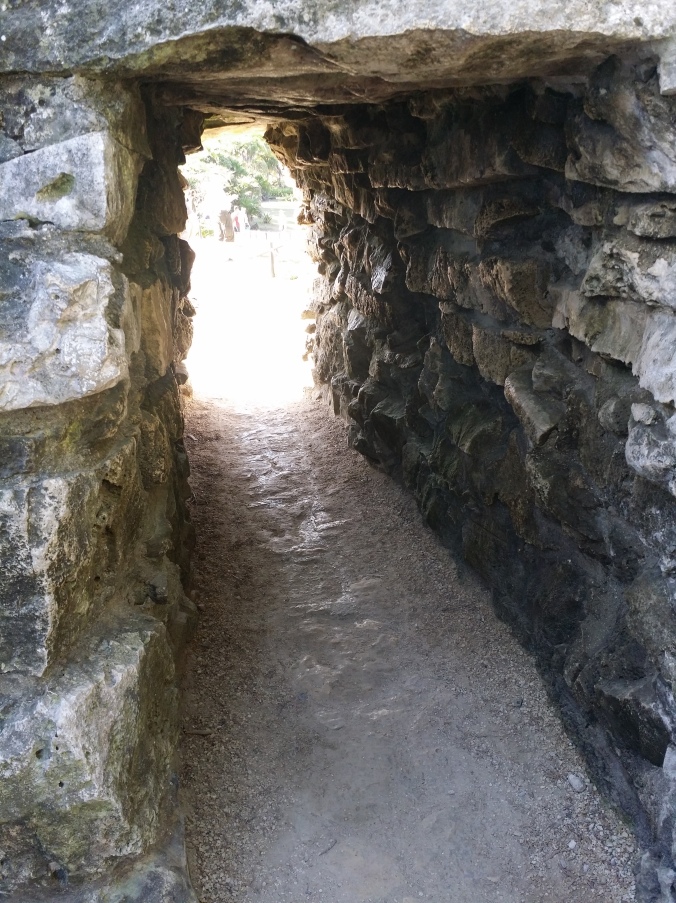
Det fanns fyra små ingångar till Zama genom stadsmuren och de visar på hur korta Mayaindianerna faktiskt var/är! There were four small entrances to Zama through the city wall and they show how short the Mayans actually were/are!

Byggnaderna är oerhört välbevarade och de har inte behövts återuppbyggas! The buildings are extremely well preserved and there was no need to rebuild them!
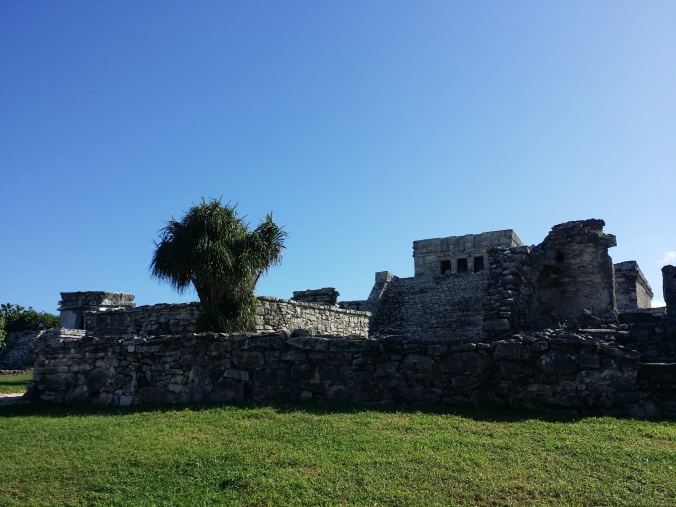
Den stora pyramiden i Zama till höger, samt den dykande/nedstigande gudens tempel längst till vänster! The great pyramid of Zama to the right, and the diving/ descending god’s temple to the far left!

Det måste varit en imponerande syn för spanjorerna när de kom seglande längs Yucatankusten från Kuba! It must have been an impressive sight for the Spaniards as they sailed along the coast of Yucatan from Cuba!
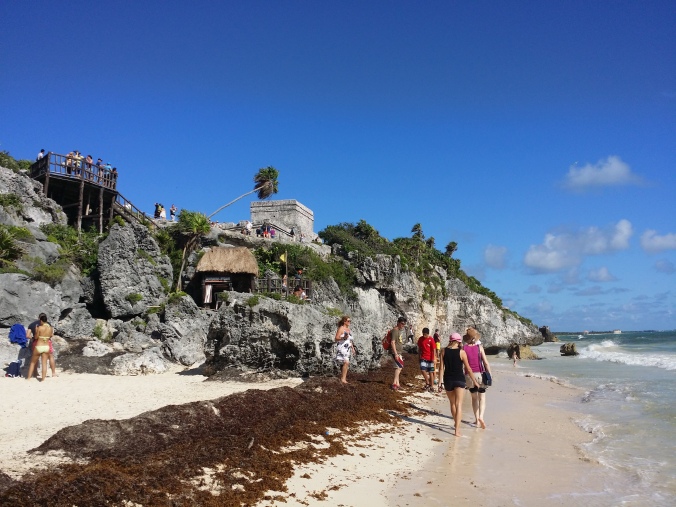
Det fanns en liten strand som turisterna slängde sig i för att svalka sig! There was a small beach there that tourists threw themselves in to cool off!

Vi hittade stora mårddjur som levde i nationalparken som finns här i Tulum! We found large mustelids that lived in the national park here in Tulum!

